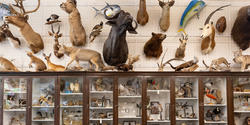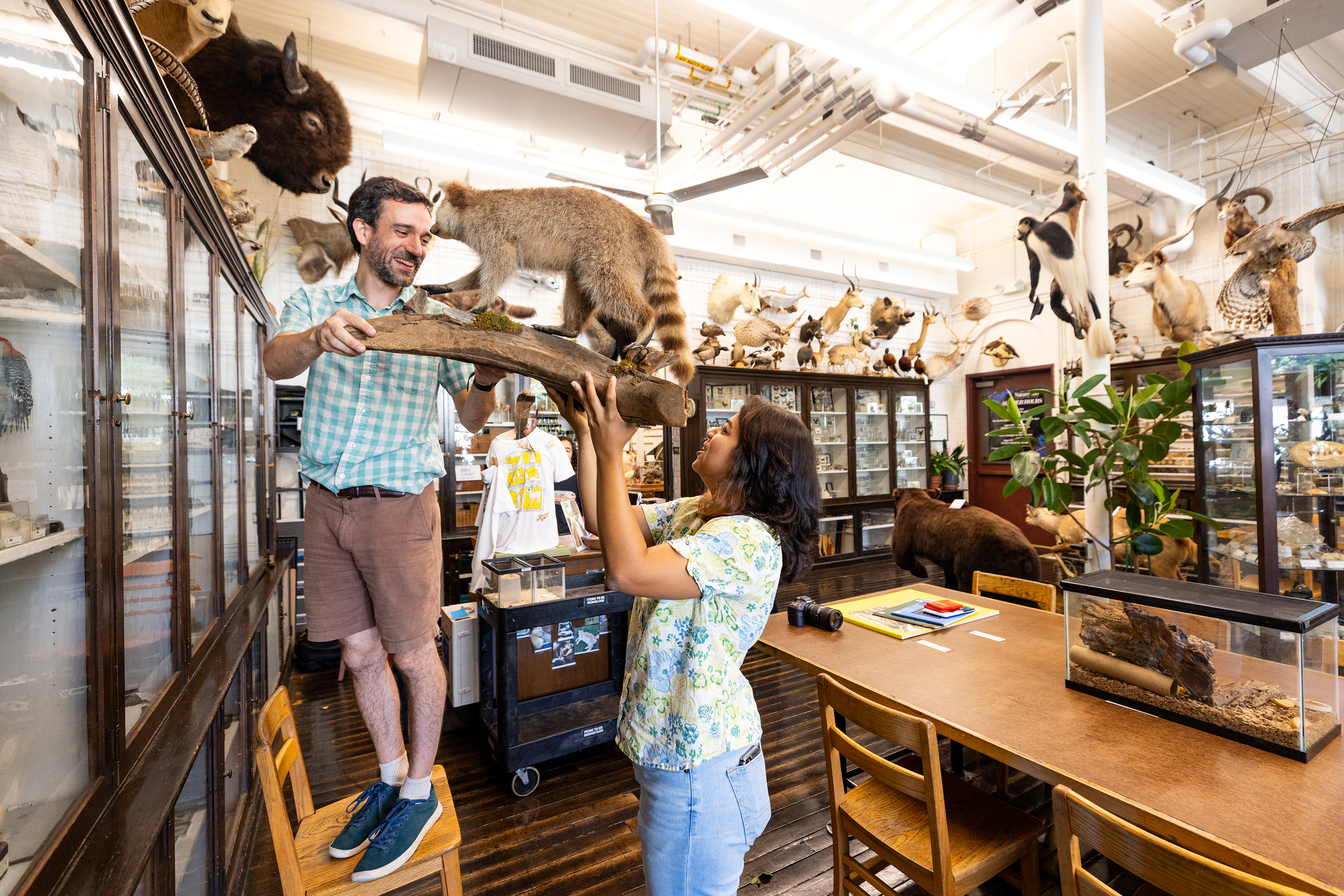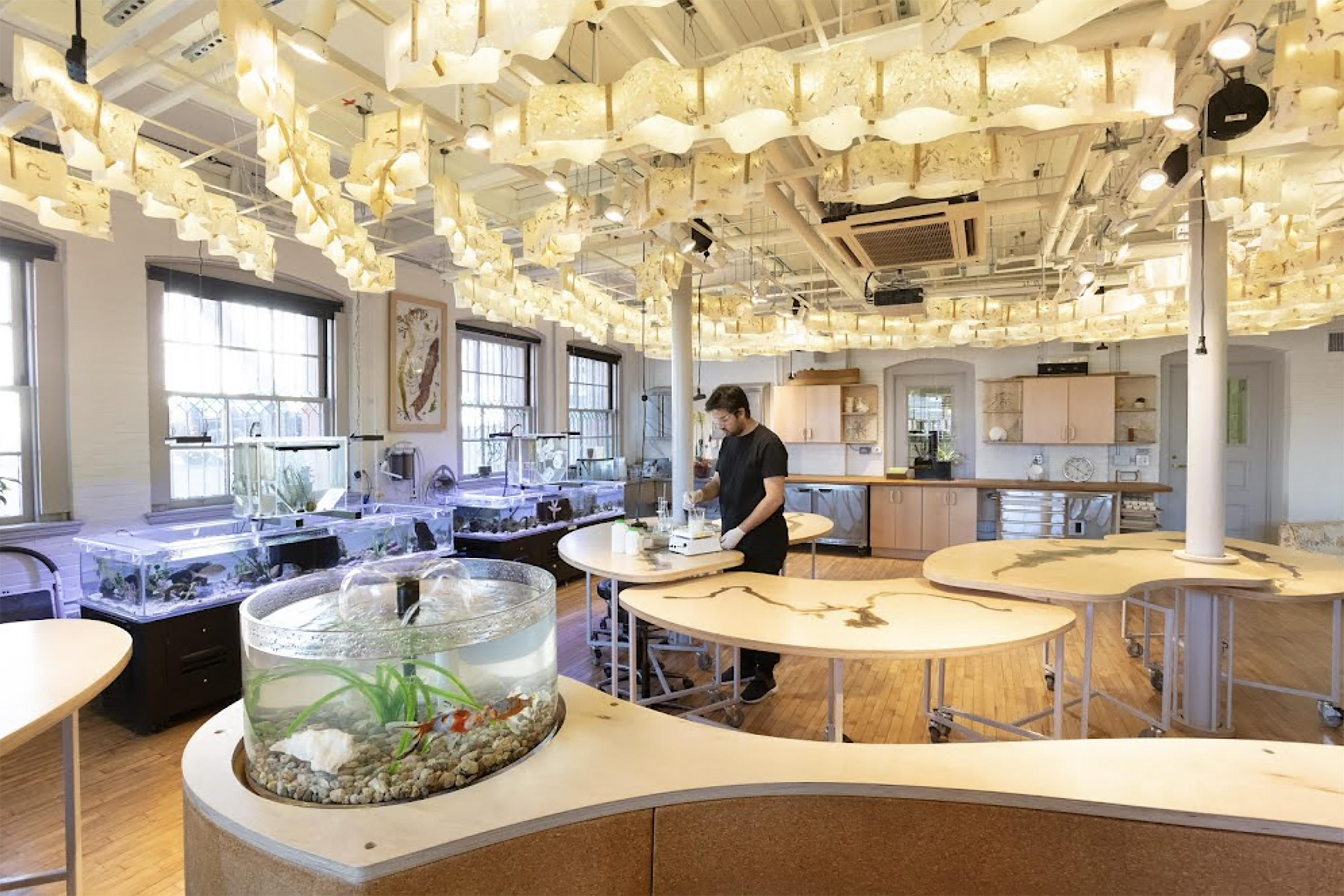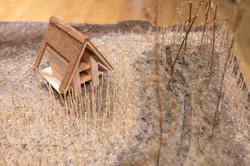Now in its fourth year, the Nature Lab program pairs EPSCoR researchers with grad students working in the fine arts.
Jennifer Bissonnette Named Houghton P. Metcalf, Jr. (HD 96) Director of RISD’s Edna W. Lawrence Nature Lab

Jennifer Bissonnette began her tenure at RISD’s Edna W. Lawrence Nature Lab in 2014 caring for live aquatic specimens and the lab’s growing collection of high-tech imaging equipment. But she soon began developing unique programming for RISD students and faculty members interested in the natural sciences. Recently, Bissonnette was named the inaugural Houghton P. Metcalf, Jr. (HD 96) Director of the Edna W. Lawrence Nature Lab. This endowed position, established in 2021 by Vera and Stephen Metcalf, creates a permanent leadership position and source of funding for the Nature Lab’s research, initiatives and programming.
Was coming to RISD an adjustment for you after working as a scientist in the field?
I have always been focused on saving the planet and turning the ship around in terms of climate change, pollution and habitat loss. But I definitely experienced a lightbulb moment here at RISD when I realized that the entire world is designed. Yes, we have to shift legislation, supply chains, etc., but if we can educate designers from the ground up to understand how their design choices can impact ecologies and societies, that’s an incredibly powerful position from which to leverage change.
In my opinion, the division between science and art is an artificial one. They are both grounded in observation and gaining a deeper understanding of what is and what might be. Art itself is a much more powerful motivator than data, which makes this an incredibly generative place to be.

How has the focus of the Nature Lab changed in recent years?
Since 1937 the lab has served as a phenomenal source of inspiration for artists and designers. Today we’re also creating a kind of eco-literacy for student artists and designers interested in developing a deep understanding of the natural world that can inform their creative practices and help them address the myriad environmental and social challenges the world is currently facing. We’re also trying to encourage students to find their own space within the field of scientific research, breaking down the assumption that science is reserved for a privileged class in white coats.
And you’re also helping students share that unique understanding with scientists, right?
Yes, there is a growing acknowledgment that the world needs the perspectives and outcomes that arise from breaking down silos and working across multiple disciplines. Natural Science Foundation EPSCOR funding—an experimental program to stimulate competitive research—allowed us to create programs like the Vis-a-thon, headed up by [Senior Research Associate] Georgia Rhodes and Stewart Skylar Copeland MFA 19 DM, that connect RISD to other Rhode Island institutions focused on science and technology. Scientists come here to learn about the ways of seeing and relating to the world that artists and designers bring. These kinds of transdisciplinary collaborations create a space for transformative outcomes.

I understand that the Nature Lab plays a huge role in RISD’s partnership with the Hyundai Motor Group. Can you say a bit about that?
It is really gratifying to have an industry giant like HMG see the incredible value in this type of nature-informed design. Their commitment gives me hope for the future. The Hyundai partnership has helped us formalize some of our pedagogy around art and design practices that are deeply informed by knowledge of the natural world, and we’re fortunate to be able to blend this approach with the phenomenal talent of RISD faculty. We also work directly with HMG designers and engineers during the summer months.
Do first-year students still sketch skeletons and specimens as they did in Edna Lawrence’s day?
Yes, the natural history collection Edna started is absolutely the core of who we are and what we do. The initial thinking behind the visualization and imaging work was about providing tools that allow students to look at nature at different scales. Edna believed the natural world provided an endless source of inspiration, and going beyond what’s visible with the naked eye opens up whole new worlds of wonder. The pattern on a butterfly’s wings, for example, is actually made up of a series of tiles that become visible when you zoom in. This complex structure is responsible for many different functions within the wing’s design, such as repelling water and dispersing heat.

Those are the kinds of natural designs that inform biomimicry studies at RISD, right?
That’s right. If we can understand how these structures are formed—through scanning electron microscopy, 3D modeling and other high-tech tools—we can attempt to mimic them in our own work. Students are making good use of the BioDesign Maker Space we created in 2018 for this type of work and developing a greater appreciation of the human-nature connection. We are, after all, a part of nature, so we need to operate within its systems. The past 200 years have shown us the damage we cause when we don’t play by nature’s rules. Biomimicry is about emulating the materials and systems that nature has evolved over 3.8 billion years that keep life on this planet in balance.
What are your thoughts on how this new source of permanent funding (the endowed directorship) might allow Nature Lab research projects to develop in perpetuity?
It was an incredibly generous gift that supports the directorship as well as different kinds of programming under the umbrella of sustainability. My hope is to bring additional people and resources into the lab to support this kind of work and meet the needs of sustainability researchers across campus. It’s about using our marvelous interstitial space to create new possibilities for the greater community that benefit everyone.
interview by Simone Solondz / photos by Jo Sittenfeld MFA 08 PH
September 24, 2024


